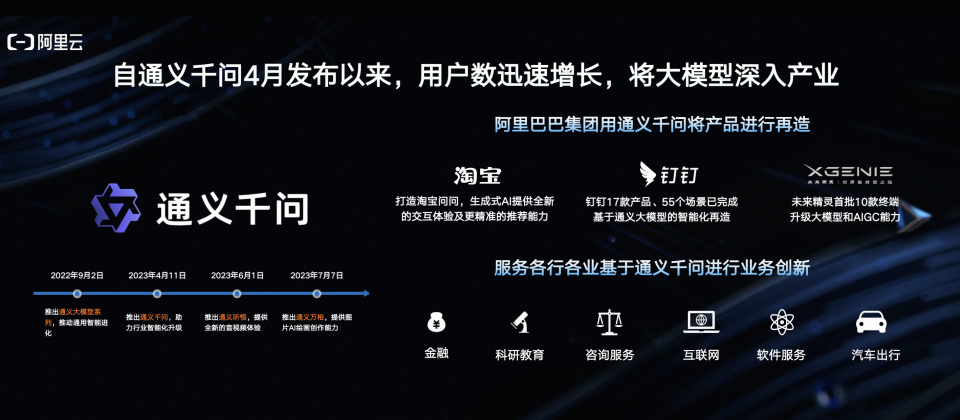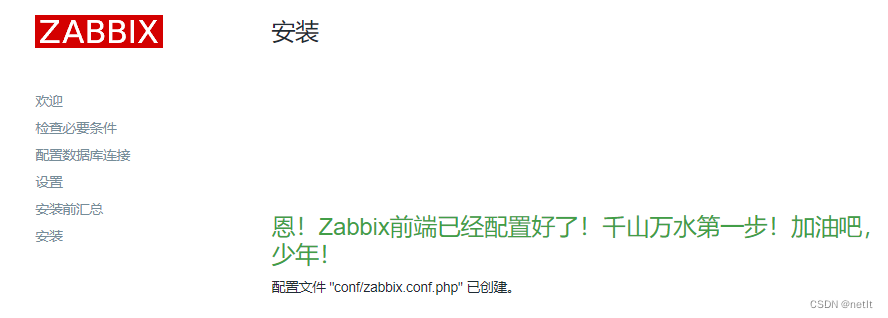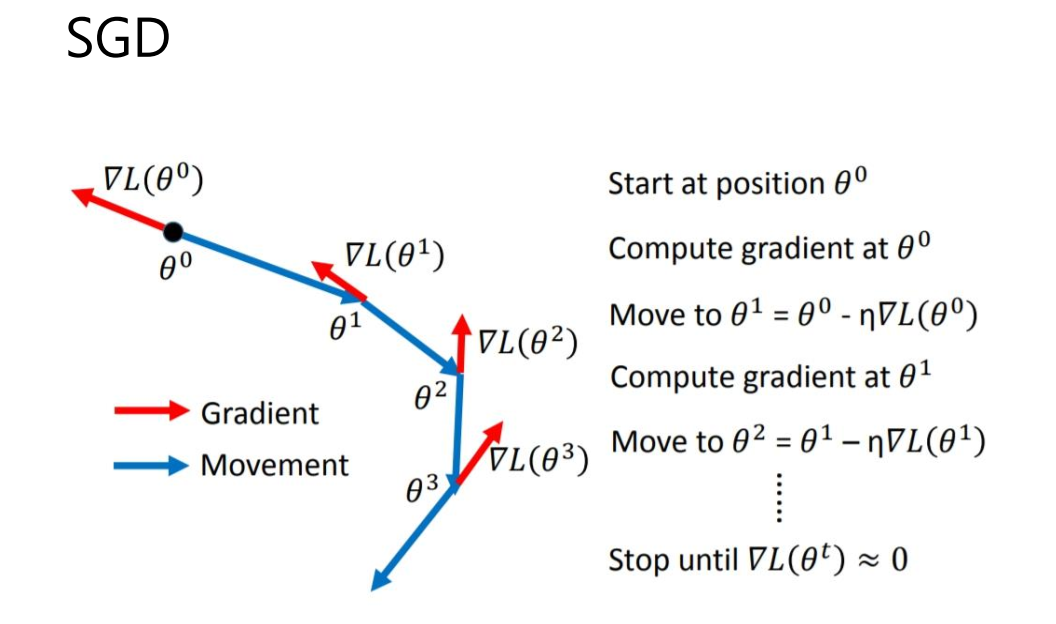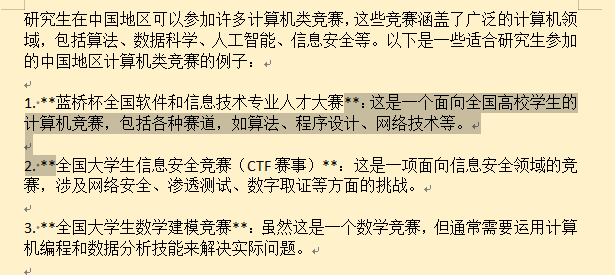'''
根据txt标签文件内的信息,制作真实的标记框,并进行一定的数据增强,最终输出一个7*7*30的张量
'''
import torch
import cv2
import os
import os.path
import random
import numpy as np
from torch.utils.data import DataLoader, Dataset
from torchvision.transforms import ToTensor
from PIL import Image
# 类别个数,该数据集有20类
CLASS_NUM = 20
class yoloDataset(Dataset):
'''
继承Dataset类,必须要实现 __getitem__和 __len__
'''
image_size = 448 # 正好是7个倍数,方便分成7x7块
# 把txt文件中目标检测框信息存放到:boxes,labels
def __init__(self,img_root,list_file,train,transform): # list_file为txt文件,
self.root = img_root #img_root为图片路径
self.train = train
self.transform = transform
self.fnames = []
self.boxes = []
self.labels = []
self.S = 7 # 表示分成的网格数量,此时表示将图像划分为7x7个网格
self.B = 2 # 表示每个网格要预测的边界框的数量,每个cell预测两个2个边界框
self.C = CLASS_NUM # 表示类别总数
self.mean = (123,117,104) # 定义RGB图像的均值。 yolov1中会对输入图像进行预处理,减去均值进行归一化。
file_txt = open(list_file)
lines = file_txt.readlines() # 读取txt文件的每一行
for line in lines:
splited = line.strip().split() # 移除首位的换行符号再生成一张列表
self.fnames.append(splited[0]) # 存储图片的名字
num_boxes = (len(splited) - 1) // 5 # 每一幅图片里面有多少个bbox
box = []
label = []
for i in range(num_boxes): # bbox四个角的坐标
x = float(splited[1 + 5 * i])
y = float(splited[2 + 5 * i])
x2 = float(splited[3 + 5 * i])
y2 = float(splited[4 + 5 * i])
c = splited[5 + 5 * i] # 行中第5个位置是物体的类别,值域 0-19
box.append([x, y, x2, y2])
label.append(int(c))
self.boxes.append(torch.Tensor(box))
self.labels.append(torch.LongTensor(label))
self.num_samples = len(self.boxes)
def __getitem__(self, idx):
'''
传入id后
1.数据增强:自己实现的 随机翻转,随机放缩,randomBlur,RandomBrightness,randomShift
2.对标注的框的坐标进行/ (w,h)进行归一化
3.pytorch预训练使用RGB,图片默认时BGR,所以将BGR2RGB
4.将图片减去均值进行归一化
5.将图片resize乘指定大小,此时时448
6.将图片标签编码到7x7*30的向量
:param idx:
:return:
'''
fname = self.fnames[idx]
img = cv2.imread(os.path.join(self.root + fname))
boxes = self.boxes[idx].clone() # 此时必须用.clone(),如果不用clone,赋值操作只是加了一个索引,修改boxes时会修改原boxes[idx]
labels = self.labels[idx].clone()
if self.train: # 数据增强里面的各种变换用torch自带的transform是做不到的,因为对图片进行旋转、随即裁剪等会造成bbox的坐标也会发生变化,所以需要自己来定义数据增强
img, boxes = self.random_flip(img, boxes)
img, boxes = self.randomScale(img, boxes)
img = self.randomBlur(img)
img = self.RandomBrightness(img)
# img = self.RandomHue(img)
# img = self.RandomSaturation(img)
img, boxes, labels = self.randomShift(img, boxes, labels)
# img, boxes, labels = self.randomCrop(img, boxes, labels)
h, w, _ = img.shape
# 对边界框进行了归一化
boxes /= torch.Tensor([w, h, w, h]).expand_as(boxes) # 坐标归一化处理,为了方便训练
img = self.BGR2RGB(img) # because pytorch pretrained model use RGB
img = self.subMean(img, self.mean) # 减去均值
img = cv2.resize(img, (self.image_size, self.image_size)) # 将所有图片都resize到指定大小
# 将图片标签编码到7x7*30的向量
target = self.encoder(boxes, labels)
for t in self.transform:
img = t(img)
return img, target
def __len__(self):
return self.num_samples
def encoder(self,boxes,labels):
'''
输入:
输出: 返回target, target是 (网格x,网格y,第一个框x1,y1,w1,h1,第二个框的x2,y2,w2,h2) ,目标框都是归一化后的。
:param boxes: 归一化后的边界框 宽和高应该是 1,1
:param labels: ground truth (7x7)
:return:
'''
grid_num =7
target = torch.zeros((grid_num,grid_num,int(CLASS_NUM + 2 * 5)))
cell_size = 1. /grid_num
# [(x2,y2) - (x1,y1)] = w,h,归一化后的坐标相减 应该得到的w,h为1,1
wh = boxes[:,2:] - boxes[:,:2]
print(f'wh={wh}')
# 得到所有锚框的中心: [(x2,y2) + (x1,y1)] / 2
cxcy = (boxes[:,2:] + boxes[:,:2]) / 2
# 获取锚框的行数,遍历所有锚框
for i in range(cxcy.size()[0]):
# 取出一个中心坐标
cxcy_sample = cxcy[i]
for i in range(cxcy.size()[0]):
cxcy_sample = cxcy[i] # 中心坐标 1*1
ij = (cxcy_sample / cell_size).ceil() - 1 # 左上角坐标 (7*7)为整数
# 第一个框的置信度
target[int(ij[1]), int(ij[0]), 4] = 1
# 第二个框的置信度
target[int(ij[1]), int(ij[0]), 9] = 1
target[int(ij[1]), int(ij[0]), int(labels[i]) + 10] = 1 # 20个类别对应处的概率设置为1
xy = ij * cell_size # 归一化左上坐标 (1*1)
delta_xy = (cxcy_sample - xy) / cell_size # 中心与左上坐标差值 (7*7)
# 坐标w,h代表了预测的bounding box的width、height相对于整幅图像width,height的比例
target[int(ij[1]), int(ij[0]), 2:4] = wh[i] # w1,h1
target[int(ij[1]), int(ij[0]), :2] = delta_xy # x1,y1
# 每一个网格有两个边框
target[int(ij[1]), int(ij[0]), 7:9] = wh[i] # w2,h2
# 由此可得其实返回的中心坐标其实是相对左上角顶点的偏移,因此在进行预测的时候还需要进行解码
target[int(ij[1]), int(ij[0]), 5:7] = delta_xy # [5,7) 表示x2,y2
return target # (网格x,网格y,第一个框x1,y1,w1,h1,第二个框的x2,y2,w2,h2) ,目标框都是归一化后的。
# 以下方法都是数据增强操作
def BGR2RGB(self, img):
return cv2.cvtColor(img, cv2.COLOR_BGR2RGB)
def BGR2HSV(self, img):
return cv2.cvtColor(img, cv2.COLOR_BGR2HSV)
def HSV2BGR(self, img):
return cv2.cvtColor(img, cv2.COLOR_HSV2BGR)
def RandomBrightness(self, bgr):
if random.random() < 0.5:
hsv = self.BGR2HSV(bgr)
h, s, v = cv2.split(hsv)
adjust = random.choice([0.5, 1.5])
v = v * adjust
v = np.clip(v, 0, 255).astype(hsv.dtype)
hsv = cv2.merge((h, s, v))
bgr = self.HSV2BGR(hsv)
return bgr
def RandomSaturation(self, bgr):
if random.random() < 0.5:
hsv = self.BGR2HSV(bgr)
h, s, v = cv2.split(hsv)
adjust = random.choice([0.5, 1.5])
s = s * adjust
s = np.clip(s, 0, 255).astype(hsv.dtype)
hsv = cv2.merge((h, s, v))
bgr = self.HSV2BGR(hsv)
return bgr
def RandomHue(self, bgr):
if random.random() < 0.5:
hsv = self.BGR2HSV(bgr)
h, s, v = cv2.split(hsv)
adjust = random.choice([0.5, 1.5])
h = h * adjust
h = np.clip(h, 0, 255).astype(hsv.dtype)
hsv = cv2.merge((h, s, v))
bgr = self.HSV2BGR(hsv)
return bgr
def randomBlur(self, bgr):
if random.random() < 0.5:
bgr = cv2.blur(bgr, (5, 5))
return bgr
def randomShift(self, bgr, boxes, labels):
# 平移变换
center = (boxes[:, 2:] + boxes[:, :2]) / 2
if random.random() < 0.5:
height, width, c = bgr.shape
after_shfit_image = np.zeros((height, width, c), dtype=bgr.dtype)
after_shfit_image[:, :, :] = (104, 117, 123) # bgr
shift_x = random.uniform(-width * 0.2, width * 0.2)
shift_y = random.uniform(-height * 0.2, height * 0.2)
# print(bgr.shape,shift_x,shift_y)
# 原图像的平移
if shift_x >= 0 and shift_y >= 0:
after_shfit_image[int(shift_y):,int(shift_x):,:] = bgr[:height - int(shift_y),:width - int(shift_x),:]
elif shift_x >= 0 and shift_y < 0:
after_shfit_image[:height + int(shift_y),
int(shift_x):,
:] = bgr[-int(shift_y):,
:width - int(shift_x),
:]
elif shift_x < 0 and shift_y >= 0:
after_shfit_image[int(shift_y):, :width +
int(shift_x), :] = bgr[:height -
int(shift_y), -
int(shift_x):, :]
elif shift_x < 0 and shift_y < 0:
after_shfit_image[:height + int(shift_y), :width + int(
shift_x), :] = bgr[-int(shift_y):, -int(shift_x):, :]
shift_xy = torch.FloatTensor(
[[int(shift_x), int(shift_y)]]).expand_as(center)
center = center + shift_xy
mask1 = (center[:, 0] > 0) & (center[:, 0] < width)
mask2 = (center[:, 1] > 0) & (center[:, 1] < height)
mask = (mask1 & mask2).view(-1, 1)
boxes_in = boxes[mask.expand_as(boxes)].view(-1, 4)
if len(boxes_in) == 0:
return bgr, boxes, labels
box_shift = torch.FloatTensor(
[[int(shift_x), int(shift_y), int(shift_x), int(shift_y)]]).expand_as(boxes_in)
boxes_in = boxes_in + box_shift
labels_in = labels[mask.view(-1)]
return after_shfit_image, boxes_in, labels_in
return bgr, boxes, labels
def randomScale(self, bgr, boxes):
# 固定住高度,以0.8-1.2伸缩宽度,做图像形变
if random.random() < 0.5:
scale = random.uniform(0.8, 1.2)
height, width, c = bgr.shape
bgr = cv2.resize(bgr, (int(width * scale), height))
scale_tensor = torch.FloatTensor(
[[scale, 1, scale, 1]]).expand_as(boxes)
boxes = boxes * scale_tensor
return bgr, boxes
return bgr, boxes
def randomCrop(self, bgr, boxes, labels):
if random.random() < 0.5:
center = (boxes[:, 2:] + boxes[:, :2]) / 2
height, width, c = bgr.shape
h = random.uniform(0.6 * height, height)
w = random.uniform(0.6 * width, width)
x = random.uniform(0, width - w)
y = random.uniform(0, height - h)
x, y, h, w = int(x), int(y), int(h), int(w)
center = center - torch.FloatTensor([[x, y]]).expand_as(center)
mask1 = (center[:, 0] > 0) & (center[:, 0] < w)
mask2 = (center[:, 1] > 0) & (center[:, 1] < h)
mask = (mask1 & mask2).view(-1, 1)
boxes_in = boxes[mask.expand_as(boxes)].view(-1, 4)
if (len(boxes_in) == 0):
return bgr, boxes, labels
box_shift = torch.FloatTensor([[x, y, x, y]]).expand_as(boxes_in)
boxes_in = boxes_in - box_shift
boxes_in[:, 0] = boxes_in[:, 0].clamp_(min=0, max=w)
boxes_in[:, 2] = boxes_in[:, 2].clamp_(min=0, max=w)
boxes_in[:, 1] = boxes_in[:, 1].clamp_(min=0, max=h)
boxes_in[:, 3] = boxes_in[:, 3].clamp_(min=0, max=h)
labels_in = labels[mask.view(-1)]
img_croped = bgr[y:y + h, x:x + w, :]
return img_croped, boxes_in, labels_in
return bgr, boxes, labels
def subMean(self, bgr, mean):
mean = np.array(mean, dtype=np.float32)
bgr = bgr - mean
return bgr
def random_flip(self, im, boxes):
if random.random() < 0.5:
im_lr = np.fliplr(im).copy()
h, w, _ = im.shape
xmin = w - boxes[:, 2]
xmax = w - boxes[:, 0]
boxes[:, 0] = xmin
boxes[:, 2] = xmax
return im_lr, boxes
return im, boxes
def random_bright(self, im, delta=16):
alpha = random.random()
if alpha > 0.3:
im = im * alpha + random.randrange(-delta, delta)
im = im.clip(min=0, max=255).astype(np.uint8)
return im
小程序
Gorm
命令行
decodeByteArray
从网络中获取bitmap
Debezium报错处理系列
DASCTF2022十月挑战赛
图像半自动标注
mysql存储过程
远程工作
端口转发
Smart Tomcat
重构
PCB设计
xargs
个人开发
android教程
LabVIEW开发
SMBIOS
服务容错
【yolov1】yoloData.py
相关文章
qt QMutex 判断对象是否已经锁的状态
在 Qt 中,可以使用 QMutexLocker 类来判断对象是否已经锁定。QMutexLocker 是一个方便的类,它在构造函数中锁定指定的 QMutex 对象,并在析构函数中释放锁。这样,我们可以使用 QMutexLocker 对象的生存周期来判断锁定状态。
下面是…
阿里云通义千问14B模型开源!性能超越Llama2等同等尺寸模型
9月25日,阿里云开源通义千问140亿参数模型Qwen-14B及其对话模型Qwen-14B-Chat,免费可商用。Qwen-14B在多个权威评测中超越同等规模模型,部分指标甚至接近Llama2-70B。阿里云此前开源了70亿参数模型Qwen-7B等,一个多月下载量破100万࿰…
【面试】找到一个数组中超过一半的数——摩尔投票算法
摩尔投票算法
思路
算法首先将数组的第一个元素作为候选众数,并设置初始计数为1。然后,遍历数组中的每个元素,如果当前元素等于候选众数,则增加计数,否则减少计数。当计数降为0时,算法更换候选众数为当前…
Python字典排序Key不同lambda
有这么一个dict类似这样
s {AuthReq: {times: 1, size: 0}, AuthRsp: {times: 1, size: 0}, AccountLoginReq: {times: 1, size: 0}, AccountLoginRsp: {times: 2, size: 55}}嵌套字典且Key均不同,对其进行排序操作
s1 sorted(s.items(), keylambda x: x[1][tim…
ZABBIX 6.4安装部署
ZABBIX 6.4安装部署
zabbix的主要组成:
1、Zabbix Server6.4:Zabbix 服务端,是 Zabbix 的核心组件。它负责接收监控数据并触发告警,还负责将监控数据持久化到数据库中。
2、Zabbix Agent:Zabbix 客户端,部…
竞赛选题 基于深度学习的植物识别算法 - cnn opencv python
文章目录 0 前言1 课题背景2 具体实现3 数据收集和处理3 MobileNetV2网络4 损失函数softmax 交叉熵4.1 softmax函数4.2 交叉熵损失函数 5 优化器SGD6 最后 0 前言
🔥 优质竞赛项目系列,今天要分享的是
🚩 **基于深度学习的植物识别算法 ** …
wps及word通配匹配与正则匹配之异同
前言
今天在chatgpt上找找有什么比赛可以参加。下面是它给我的部分答案,我想将其制成文档裱起来,并突出比赛名方便日后查找。 这时理所当然地想到了查找替换功能,但是当我启用时却发现正则匹配居然没有了,现在只有通配匹配了。 …
React Router 关键知识点回顾
安装 React Router
npm i react-router
npm i react-router-dom配置路由
使用React Router来定义应用的路由其实比较简单,只需要简单的两个步骤:
在项目根目录下的index.tsx文件中声明堆栈路由。
<BrowserRouter><App />
</BrowserRo…
最新文章
- 客户青海地区图像识别,云拍产品实施安装#数采物联
- Internet Download Manager6.42最新下载器互联网冲浪小能手们!
- 构建与操作共享栈
- C++:缺省参数|函数重载|引用|const引用
- 《数据结构-用C语言描述第三版》课后答案 第一章
- 【HarmonyOS】关于官方推荐的组件级路由Navigation的心得体会
- clojure 中文标识符
- ES6中用变量名或者表达式作为对象属性名
- Windows操作系统堆和栈的区别
- 人员选择树,搜索自动筛选功能 (vue+chosen+zTree)
- (五)Java游戏部署在Windows Mobile平台仿真器(Microsoft)
- .NET Framework 3.0 版本命名與部署 QA




